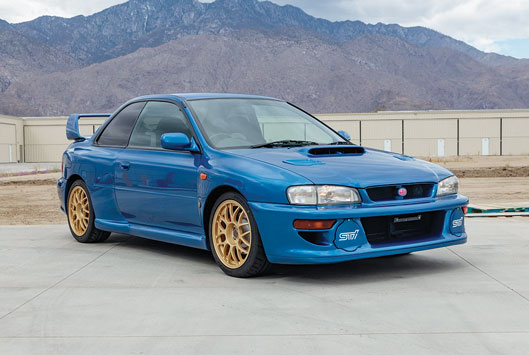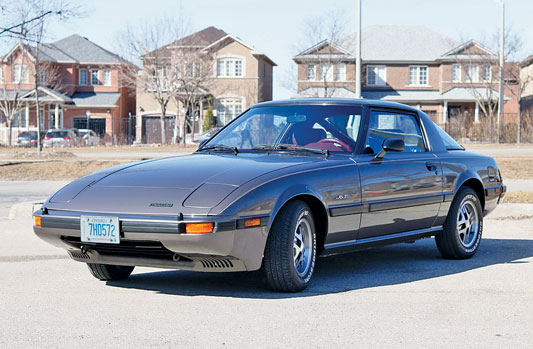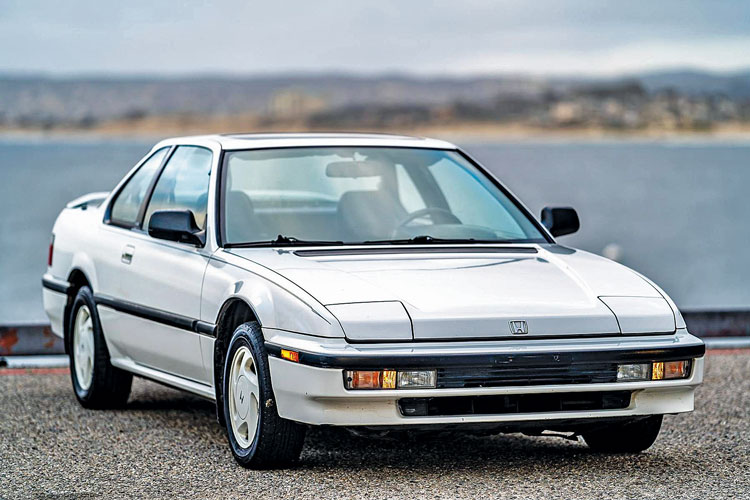
1998 Subaru Impreza 22B STi
#46166. S/N GC8069816. 40k kilometers (25k miles). “Turbocharged 2.2-liter flat-4, 5-speed manual transmission, locking-center differential, World Rally Blue exterior, black and blue two-tone interior, adjustable rear wing, red-finished STI brake calipers, air conditioning, #156 of approximately 400 examples for Japanese market, imported to U.S. in 2020, Show or Display exemption letter, timing belt replaced in 2021.” Condition: 1. SOLD AT $317,555. Bring A Trailer, 4/19/21.
If there is one Subaru you must know about, let it be this one, the holy grail. This wide-body version of the STI was built to celebrate Subaru’s three consecutive World Rally Championship titles. The engine is a bored version of the 2.0-liter EJ20G boxer 4 found in WRX/STIs of the time, hence the “22” in the name. We saw a 22B sell for around $106k in 2017 (SCM# 6803939), a nice appreciation from the $41,765 sale we recorded in 2010 (SCM# 166068). Here we are in 2021 and this example sells for $300k, which has to be considered well sold. Is it the growing interest in Japanese collector cars? The online auction effect? Probably both. The 22B is not yet 25 years old, so is allowed into the U.S. only under the Show or Display law. The downside to it being imported this way is it cannot be titled or registered for use on public roads. But at this price, this car is unlikely to be driven regularly anyway. There are a few more of these in the U.S. waiting to be sold, and after this sale, they might soon come to auction. If you want a similar car that is about $300k easier on the bank account, look for a 2.5RS.
1985 Mazda RX-7 GSL

#46447. S/N JM1FB331XF0896326. 19k kilometers (12k miles). “Carbureted 1.1-liter Wankel rotary, 5-speed manual transmission, custom silver metallic, red leather upholstery, limited-slip differential, factory cassette stereo with graphic equalizer, original tires.” Condition: 1. SOLD AT $28,875. Bring a Trailer, 4/17/21.
While the RX-7 wasn’t the first car to have a Wankel rotary engine, it was the first to kick off Mazda’s new line of rear-wheel-drive hatchback coupes, a replacement for the original Savanna, or RX-3. This example is one from the end of the first-generation FB RX-7 (also known as a Series 3), so it was equipped with all the best and final updates except for the fuel-injection system that was introduced on the RX-7 GSL-SE model. This car looks like it was placed in a time capsule and opened within the past year. The engine parts still have their zinc coating, the differential still has the oil-requirement sticker in great shape, and it even has the original tires. Is this a sign of more FB RX-7s selling for this much? Maybe, maybe not. With time they will trend higher; however, condition was the key driver here. Well sold.
1990 Honda Prelude Si

S/N JHMBA4250LC007473. 144,000 miles. “2.1-liter twin-cam inline 4, 4-speed automatic transmission, antilock brakes, 14-inch alloy wheels, rear spoiler, integrated high-mount third brake light, maintenance log detailing services performed up to 143,000 miles and recording fuel stops, oil additions, oil changes and other information.” Condition: 1-. SOLD AT $7,942. Cars & Bids, 4/8/21.
This wedge-shaped Honda was third in the line of Preludes, a 2-door coupe that looked like a sportier version of the Accord. The hierarchy of the Honda brand at the time started with the Civic, Accord and then Prelude, with the Legend at the top. But in the U.S., the Legend was an Acura, making the Prelude the fanciest car with an “H” on its hood. Honda equipped the Prelude with its newest features, such as antilock brakes and four-wheel steering. While this example does not have 4WS, the technology allowed the rear wheels to turn in phase with the fronts, 1.5 degrees on small angles and all the way up to 5.3 degrees, shrinking the turning radius. The 2.1-liter B21A1 engine in the Prelude was also slightly different from the other B-series Honda engines. It had a longer stroke and a wider bore than the 1.8-liter version found in the Acura Integra. The downside is that the Prelude’s B-series used fiber-reinforced cylinder walls, which can increase wear on the piston rings and scare away machine shops. Aftermarket support for the Prelude exists, but nothing like for the Civic. This has led to Preludes not receiving the same kind of collector interest, which has kept them cheap enough to be affordable. ♦